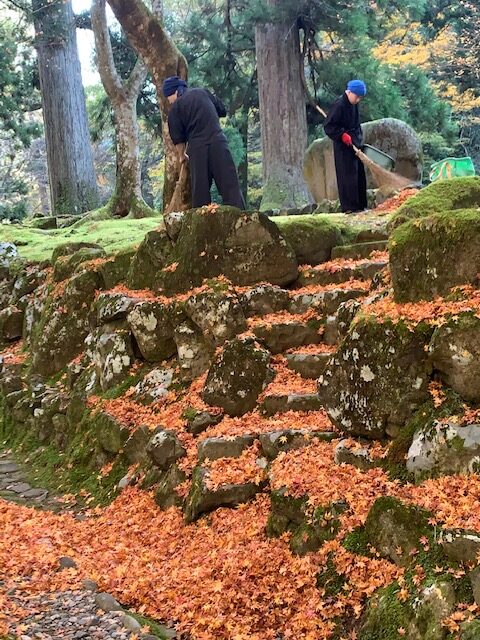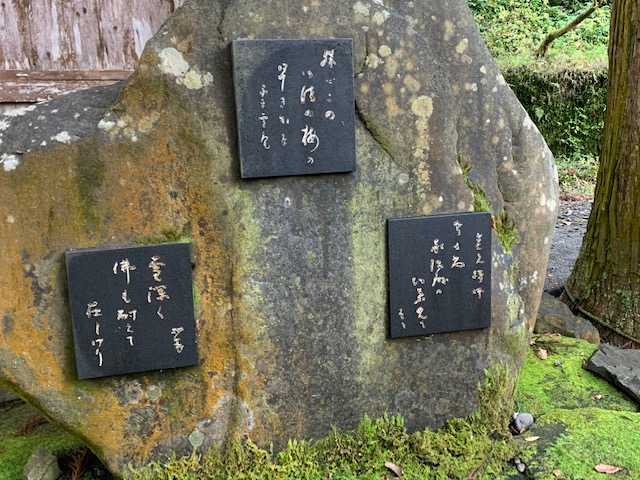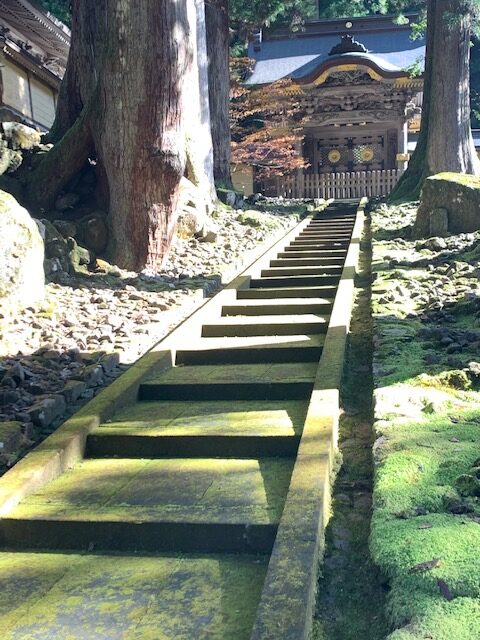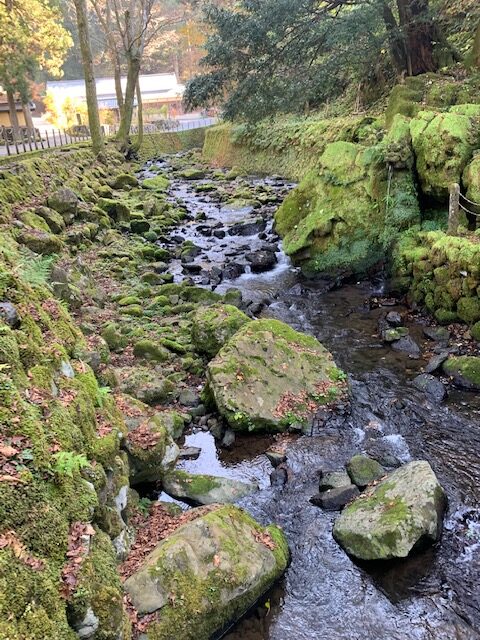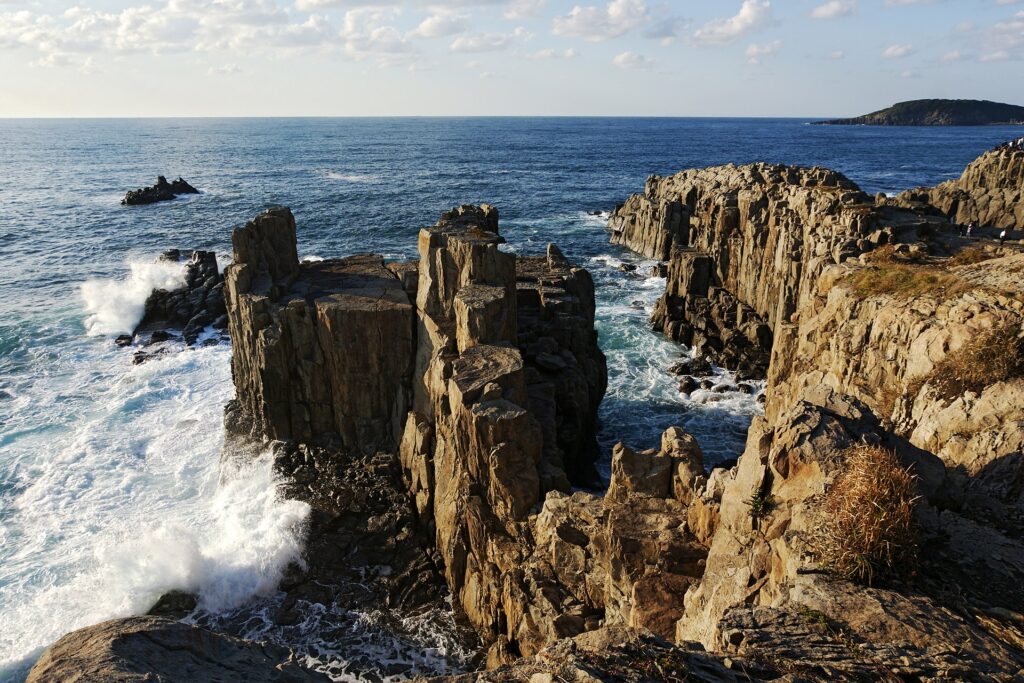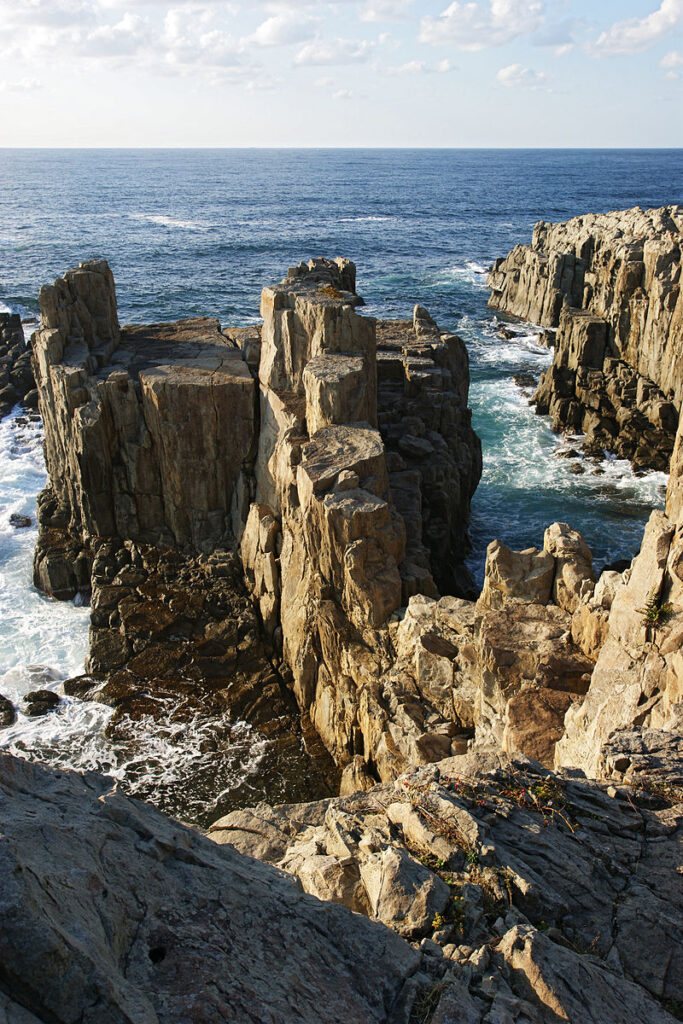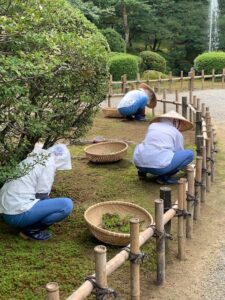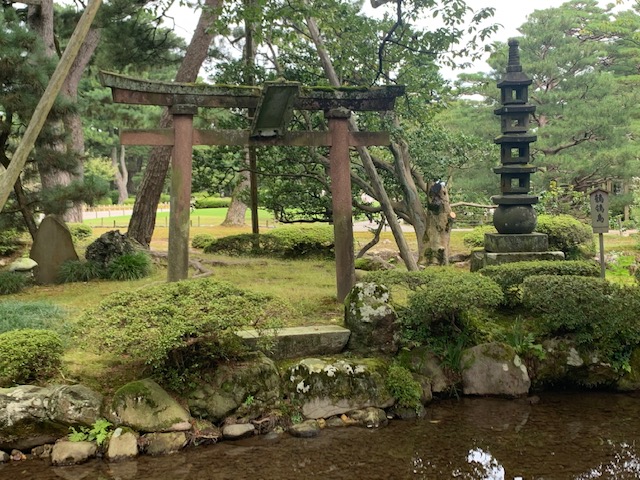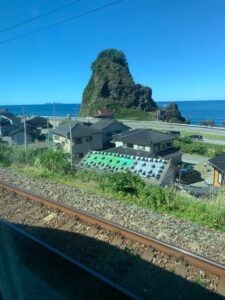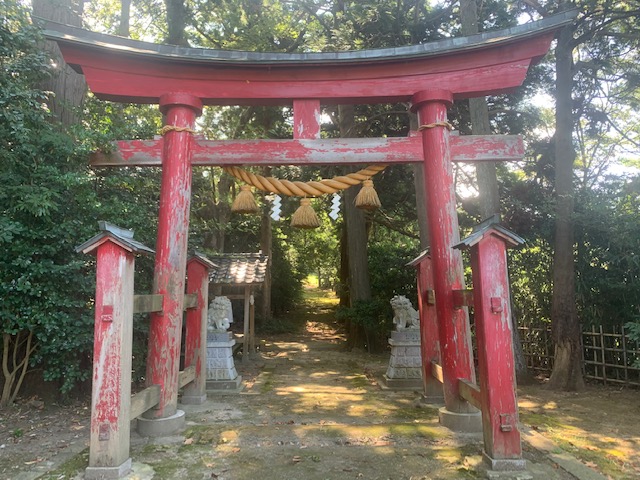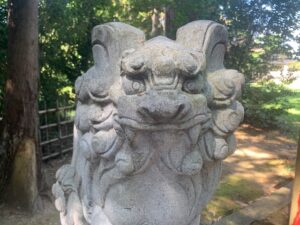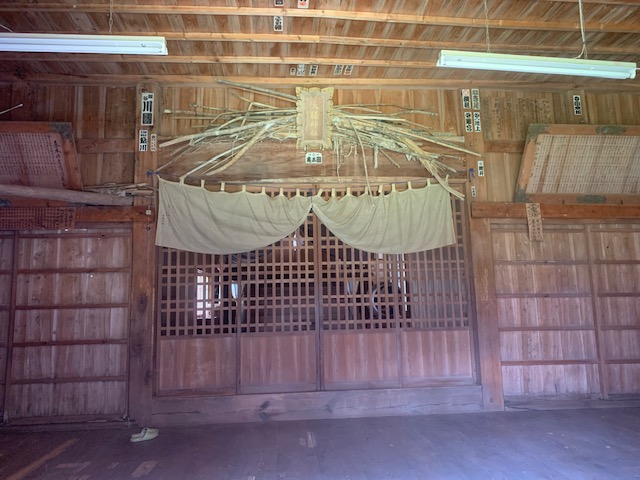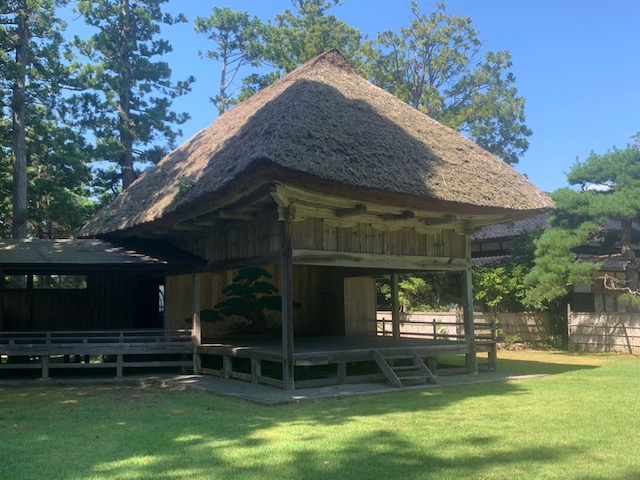
First stop for the loop bus in Tsuruga is Kehi Jingu, the town’s main shrine. As I got off, I noticed something odd, and turning round found myself face-to-face with a large brown owl perched on a coffee sign. For a moment we stared at each other, then it flapped its large wings and flew off to the shrine grove. I had never been that close to a wild owl, and without thinking I followed in the same direction, as if it was an animal messenger sent to guide me.
At the entrance to the shrine a small hump-back bridge signified the transition to a sacred realm, a feeling enhanced by passing through the portal-like frame of Japan’s third largest wooden torii. Within the compound is an ever flowing spring, the water of which is said to ensure a long life. Put all that together with the owl, and it is no wonder that the Harry Potter boom of recent years has led to a dramatic upturn in shrine visits amongst the. young.
New Age wizardry, driven by bestselling anime and manga, holds Shinto’s ancient shrines to be ‘power spots’ charged with energy and home to glamorous young miko (shrine attendants). Authorities have reacted with ambivalence, for ‘magick’ speaks to the universal rather than to ancestral concerns. On the other hand, shrines are more than happy to welcome the increase in custom.
By this stage of my journey I had come to consider Basho an unseen travel companion, and it was comforting to find a statue of him in the grounds. The poet had come here intent on seeing the full moon, and when he arrived a day ahead of time the sky was promisingly clear. Alas, the following evening it clouded over.
The autumn moon –
Ah, the Hokuriku climate
So variable
Of the five haiku Basho wrote at Tsuruga, only the above made the final cut. Kehi Jingu however has chosen to immortalise another, which references the shrine. For over a thousand years Shinto and Buddhism were fused in religious expression, and the shrine was once part of a Buddhist complex. According to tradition, the monk Ippen, founder of the Ji sect, laboriously carried white sand from a beach to cover over the shrine’s muddy access, and the practice was continued by his successors. Basho uses this to fashion an image of spiritual radiance.
The moon so pure –
shining on silver sand
laid by monks


